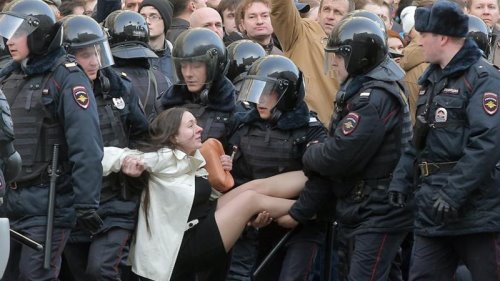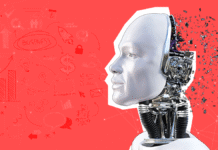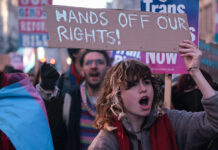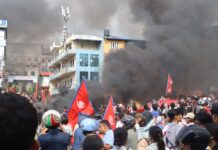Socialist Alternative (CWI Russia) reporters
As the clock moved across Russia’s nine time-zones, in nearly one hundred cities, beginning with the far-eastern cities of Vladivostok, Khabarovsk and Komsomolsk-na-Amur, hundreds and sometimes thousands turned out for illegal demonstrations, to protest at the corruption of the ruling elite.
They were met by riot police who arrested hundreds. Protests took place in cities where such opposition would not be expected, such as in the north Caucasus, in Krasnodar and also Dagestan. There were even small protests in Simferopol and Sevastopol, the Crimea’s two major cities.
In St Petersburg 10,000 to 15,000 flooded the Winter Palace courtyard. The police reports over 130 were arrested. In Moscow, another 15,000 flooded the city’s main street, Tverskoi prospect, which leads to the Kremlin. The Moscow police and riot police did not hold back. By evening, over 1,030 people were sitting in the city’s police cells. There were many reports of people being beaten.
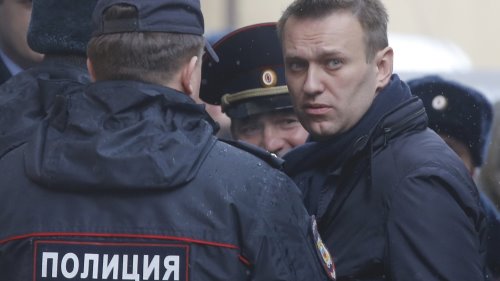
The official Russian media completely ignored these events. But afterwards, political commentators are drawing comparisons with the protests that rocked Moscow five years ago, against fraudulent election results. The media almost breathe a sigh of relief, when claiming that, as then, the regime will ride out the protests.
But there are very important differences between the current explosion of anger and events five years ago. The 26 March protest was called single-handedly by opposition leader, Alexei Navalny. A lawyer with neoliberal and Russian nationalist views, Navalny became well-known through his blogs against corruption. He has announced he will stand against Putin in next year’s presidential election.
In announcing his candidacy, Navalny adopted a new strategy for the Russian opposition. The 2012 protests were isolated in Moscow; although they attracted the support of a wide layer of younger workers in the capital, they were led by a coalition of the neo-liberal politicians and the billionaire oligarch Michael Prokhorov. The regime used this association to say the protests were anti-working class.
Navalny has drawn the conclusion that the opposition needs to not only spread out geographically but also to make a more direct appeal to the working class. He puts to the fore issues such as the defence of education and healthcare and has called for a national minimum wage. For this, Navalny has been completely spurned by other neo-liberal opposition leaders – standing up for workers’ rights is, of course, anathema to such people. He also produced a video exposing massive corruption centered on Prime Minister Dmitrii Medvedev, which, although ignored by the national media, was viewed 11 million times on Facebook.
The other very significant feature of these protests has been the complete dominance – 95 percent – of youth, with many school students. Many were detained and some were beaten up. The social networks have been full of posts by these youth.
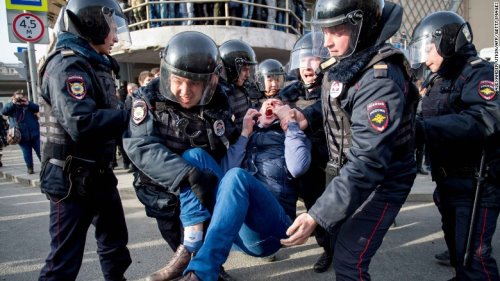
A 17-year old from Krasnodar, for example, explained how he was removed from politics and interested just in music. But three years ago things began to change after the unification of Crimea to Russia. “You know,” he said, “I was used to not thinking about politics and politics did not interfere with me but then began all this ‘Crimea is ours’ madness. At school they started all these celebrations over the re-unification of Crimea. For hour after hour they started to tell us about all these ‘evil men from America’ and the main theme of history lessons became that the west wants to destroy Russia. On top of this the school was visited by a long stream of priests and Cossacks. … So, I drew the conclusion, maybe we have this situation because people are not interested in politics – maybe that’s why for my whole 17 years there has been just one president…will I go to the demonstration? If the authorities ban it, I will definitely go”.
For the current protests, the authorities decided to use repression from the very start, unlike in 2012.
There was to be no placards, banners, leaflets or speeches. As soon as anyone stood out in any way, with a hand-made placard or by starting a chant, they were arrested. But the fear of repression has not worked it appears.
The ruling clique are not sure what to do with next year’s election. Latest reports suggest the Kremlin has decided not to allow Navalny to run. But this is a very risky strategy given the growing dissatisfaction in society.
The problem is that Navalny is not a genuine fighter for the rights of workers and youth. At the same time, to say that there is a political vacuum is a big understatement. At least in Moscow, where police control was much more rigid than in other cities, there was not a single political group participating (apart from Socialist Alternative), not a single leaflet distributed or party flags or placards displayed. This is partly because of the arrests. But it is also because of the criminal sectarianism of many left groups, who have no idea about how to intervene in such events.
The only way for this movement to develop in a way that can genuinely solve the problem of corruption, education, healthcare and poor wages and pensions, is to unite the wider working class. This begins with youth but is also linked to building a genuine democratic socialist organisation that can fight for political power.
